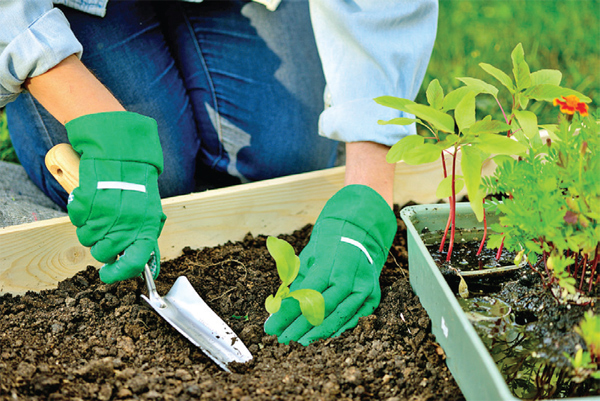Organic gardening is not just for those with large yards, as it can be done even if you live in an apartment or condo. When purchasing organic gardening containers, use premium potting mix instead of soil and follow the instructions carefully. Plants require more water than those planted in the ground, so it is preferable to hang them rather than place them on the ground. Mulch can be added to keep it from drying out, and plants and herbs complement them. Strawberries will also grow well here.
Organic gardening should be done six hours per day, preferably in the morning. The best container for organic gardening is made of clay, plastic, or wood. The starting point should be the plant's average root depth and diameter, and the ideal container should be 8 inches deep and 10 to 12 inches wide. It is important to be safe and bring any bugs, such as hookworms, slugs, aphids, and ladybugs, to the sink and wash the leaves.
Organic gardening isn't just for those with large yards. This is because organic gardening containers allow you to do it even if you live in an apartment or a condo.
Despite their limitations, organic gardening containers have advantages. When placed on a balcony or patio, they can easily be brought indoors during the winter and you won't have to deal with the usual garden problems such as weeds, insects, or soil-borne diseases.
When purchasing organic gardening containers, use premium potting mix instead of soil because it is much lighter and provides excellent drainage for whatever you are growing. You will almost certainly be using nutrients, so make sure you follow the instructions carefully because too much organic fertilizer will burn the roots.
Organic gardening container plants require more water than those planted in the ground. To avoid drowning your crops, apply this in small amounts half an hour after the initial watering. It is preferable to hang them rather than place them on the ground, and if no holes exist, go ahead and drill a few. Because it gets pretty hot in the summer, you can add mulch to keep it from drying out.
What plants and herbs complement organic gardening containers? Capsicum, carrots, bush beans, eggplant, lettuce, onions, peas, radishes, spinach, and tomatoes are some examples. Strawberries will also grow well here, so if you want to learn more, talk to someone at your local gardening store or do some online research.
Plants grown in organic gardening containers require sunlight. This should ideally be six hours per day, preferably in the morning rather than later in the afternoon. If you intend to place them in a windy area, group them together with the tallest along the walls to provide cover for the others.
What is the best container for organic gardening? It can, thankfully, be made of clay, plastic, or wood. The important thing is that it can drain the water because otherwise your plants will die. Because they come in various sizes, you must know which one to purchase from the store.
Your starting point should be the plant's average root depth as well as its diameter. If your plant has roots that are 6 inches deep and 10 inches wide, the ideal organic gardening container is 8 inches deep and 10 to 12 inches wide. There must always be a small margin for error because whatever you are growing may grow to be larger than you anticipated, so it is better to be safe than sorry.
Bring any bugs, such as hookworms, around your plant to the sink and wash the leaves. If you find slugs, sprinkle diatomaceous earth on the soil to get rid of them.
If you have aphids on your plant, get some other insects to kill them by purchasing a pack of ladybugs that will eat it without harming your produce.
Organic garden containers could be considered a gardening innovation. This is because you can do it almost anywhere, such as in a condo or an apartment, so you don't have to buy organic fruits and vegetables from a store when you can get them from your balcony or window.


















0 komentar:
Posting Komentar